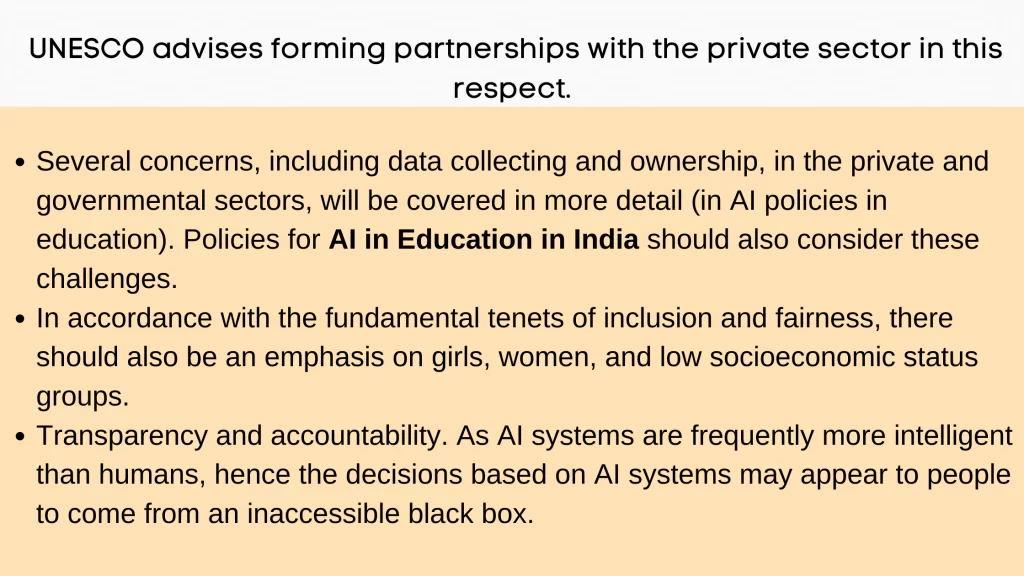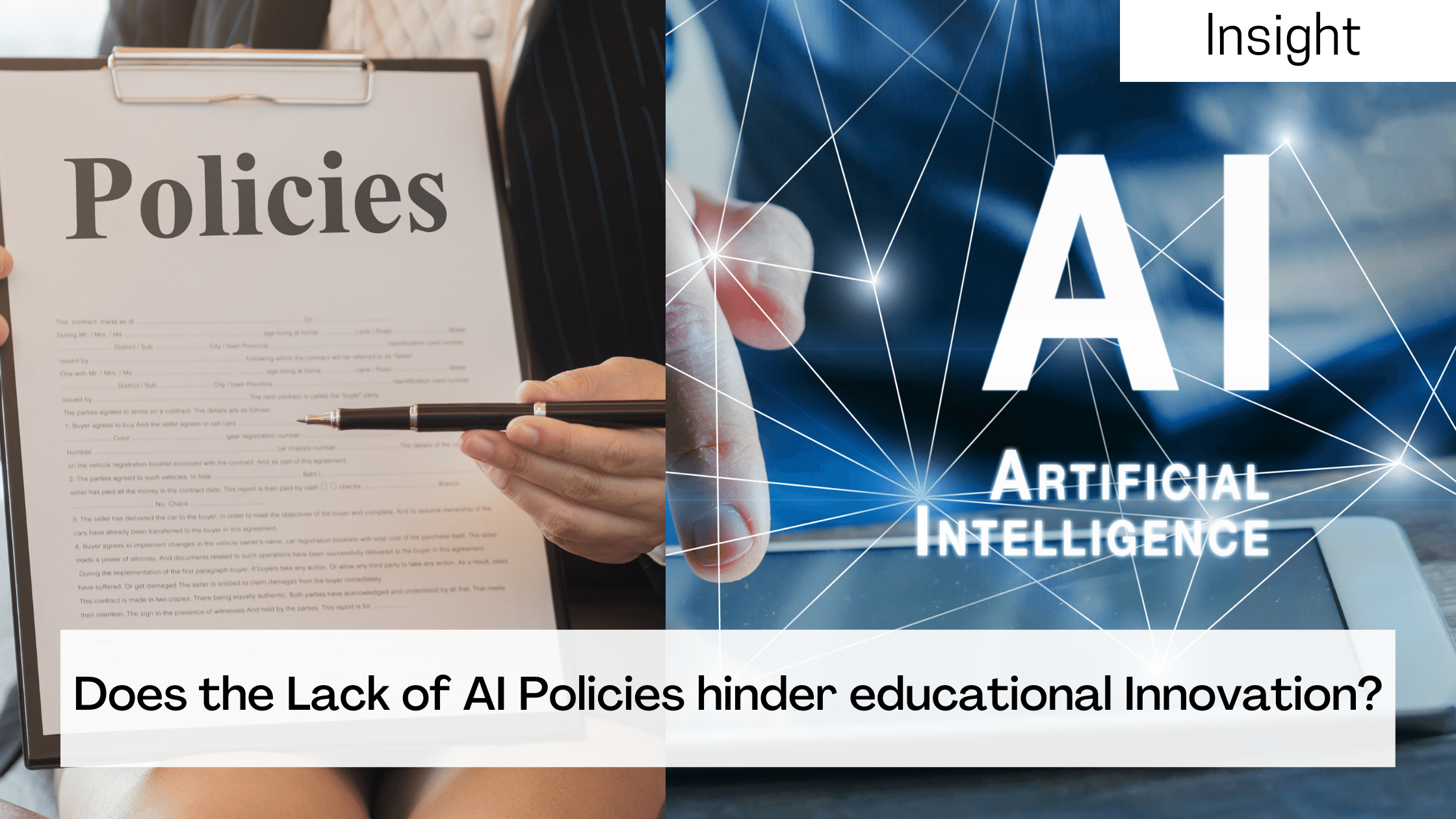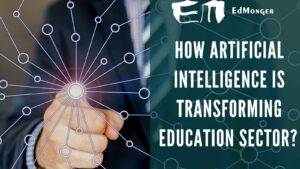Artificial Intelligence in Education:
- The global market value of AI in education is expected to grow by over 45% CAGR between 2022 and 2030. (Sources)
- 86% of educators state that technology, including AI, must be a vital component of education. (Sources)
- AI will power over 47% of learning management tools in the following three years. (Sources)
AI in India:
- AI market in India is expected to reach US$7.8 billion by 2025 at the rate of 20.2 per cent compound annual growth rate (CAGR). (Sources)
- The AI software market in India will grow to US$6.4 billion in 2025 at 18.1 per cent CAGR. (Sources)
“According to a NASSCOM (2020) report, AI is expected to add that India is collaborating internationally to develop AI software. By a margin, the European Union US$450 billion and US$500 billion to India’s gross domestic product (GDP) by 2025.”
(Sources)
The above data shows that All industries may benefit from the development and innovation that (AI) brings.
And when it comes to AI in education, the use of artificial intelligence in the educational system is a hot topic everywhere.
Every coming year, tons of amazing edtech tools are introduced. Besides, more and more algorithms and systems for artificial intelligence (AI) are being used in the educational setting.
Researchers worldwide utilize cutting-edge AI approaches, including deep learning, data mining, etc., as education progresses to cope with challenging learning problems and tailor instruction to the needs of specific students.
Along with this, COVID-19 sped up the whole procedure. From online lectures, and seminars to tests, most colleges and schools have adopted or will adopt AI-based tools to accelerate hybrid learning and the overall growth of the education sector.
All these factors combined show how AI is transforming the education sector.
But, still, there are a lot of challenges in ultimately adopting AI in education, transforming the way students and teachers communicate, to leverage the complete AI system that gives accurate outcomes. And the most significant factor contributing to AI challenges in education is the lack of AI policies in the education system.
Lack of AI policies in the educational system
What is valid for AI generally on a global level is likewise true for AI in Education in India.
Action is especially needed in sectors where the private sector is heavily involved. This is a recent phenomenon because national governments formerly handled the management and oversight of the education sector.
As AI in education is a positive development with a positive mindset, it produces threats and opportunities that strongly require policies to manage.
The public sector alone won’t be able to develop the essential advances at such advanced technical levels. Hence,

In other words, it’s often difficult to understand how or why an AI system generates a certain result.
This challenge brings up the critical issue of AI accountability but also has a connection to liability.
For instance, the question of who or what is responsible and accountable emerges if an AI tool erroneously directs a learner or mistakenly forecasts their learning results.
And the options are The creator of the AI technology, the teacher or the AI algorithm. And hence we cannot choose the one.
As per the studies:
1. It is challenging to put one’s faith in an unfamiliar system, especially when it makes illogical forecasts (for example, a dropout risk for a student whom a human observer would not expect to drop out).
2. If people are unable to comprehend how a system arrived at a specific undesirable outcome, they will find it difficult to fix it.
AI-powered teaching technologies must be reliable and simple for instructors to understand, even for those who lack a solid technical background.
To achieve this element of inclusiveness, we require ‘explainable AI,’ which adheres to the three criteria of transparency, interpretability, and explainability.
However Indian government is continuously focusing on making AI policies that overcome the AI challenges and improve the educational sector; here they are:
AI In Education: Policies Made By Indian Government
National Education Policy 2020 (Ministry of Education, 2020a)
| Aim | Strategies |
| Implementation of national policy for technology adoption and planning to provide high-quality education and create a long-term digital education system | To help students at all levels acquire critical abilities, and build curriculum and methodology that teach new disciplines like AI and Design Thinking. Prepare professionals with knowledge of cutting-edge technology, such as AI. Provide doctoral and postdoctoral programmes in AI/machine learning. Offer focused training in low-expertise jobs that support the AI value chain, such as speech transcription, picture classification, and data annotating. Translation of textbooks into all Indian languages using natural language processing Create the National Research Foundation (NRF) to advance AI research |
National Digital Education Architecture 2021 (Ministry of Education, 2021a)
| Aim | Strategies |
| A collection of guidelines and methods for creating digital tools and services that satisfy the needs of students, educators, and school administrators in India’s education ecosystem and digital ecosystem in order to achieve the objectives of the National Education Policy 2020 | Using AI/machine learning techniques, provide individualised learning Using AI techniques, enable data collecting in schools Use of AI and machine learning with a focus on voice identification and analysis services for language learning Utilize AI/machine learning to focus on solutions for individualised learning assistants that will allow students to learn at their own speed. Create a collection of reusable AI services, open-source libraries, open-source models, and open-source datasets that can be incorporated into other building blocks and used in the education sector. |
Responsible AI. Approach document for India. Part 1 – Principles for Responsible AI (NITI Aayog, 2021a)
| Aim | Strategy |
| India’s relevant stakeholder’s managing AI systems responsibly | Security and reliability Equality Integrity and absence of bias Security and privacy Transparency Accountability The preservation and promotion of good human values |
Responsible AI. Approach document for India. Part 2 – Operationalizing Principles for Responsible AI (NITI Aayog, 2021b)
| Aim | Strategy |
| Identifying several methods for putting the seven “Responsible AI” concepts into practice | Create a multidisciplinary advisory council to design AI policy and serve as a think tank for the creation of high-calibre research outputs relevant to AI. One example of such a body is the Council for Ethics and Technology. The private sector will guarantee reasonably priced adherence to AI standards The government should promote capacity building, accessibility, and regulatory measures, as well as encourage ethical AI procurement practices. |
Recommendations To Overcome The Challenges Of Policies for Artificial Intelligence In Education
- The importance of artificial intelligence ethics in education should be given top consideration.
- Quickly develop a comprehensive regulatory framework for Artificial Intelligence in education.
- Establish successful public-private collaborations.
- Make sure that all instructors and students have access to the most recent technologies.
- Boost AI literacy initiatives.
- Make an effort to address algorithmic biases and the prejudice they cause.
- Boost confidence in AI among the population.
- Ask the business sector to include educators and students more fully in developing AI products.
- Give the students control of the data.
- Take use of artificial intelligence’s adaptability in educational systems.




